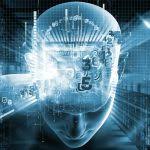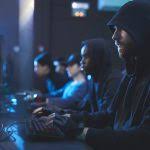How AI is reshaping cybersecurity amid new types of attacks, deepfakes, and risks.
AI and cybersecurity have taken center stage at the Barclays Global Tech Conference. Cato Networks (CATO) Co-founder and CEO Shlomo Kramer joins Yahoo Finance’s Seana Smith to discuss artificial intelligence’s growing influence on the cybersecurity landscape heading into 2024.
Kramer highlights the challenges facing cybersecurity, including deep fakes and the “industrialization of attacks.” Kramer insists that “defenses need to keep pace,” noting AI adoption to be one such method to enable constant adaptation.
At the recent Barclays Global Tech Conference, two topics dominated the conversations and presentations: AI and cybersecurity. As technology continues to advance at an unprecedented pace, it is no surprise that these two fields have taken center stage. And at the forefront of this discussion was Shlomo Kramer, co-founder and CEO of Cato Networks (CATO), who joined Yahoo Finance’s Seana Smith to discuss the growing influence of AI on the cybersecurity landscape heading into 2024.
The Need for AI in Cybersecurity
In today’s digital age, cybersecurity has become a critical concern for businesses and individuals alike. With the rise of sophisticated cyber attacks and data breaches, it is no longer a question of if a company will be targeted, but rather when. And as technology evolves, so do the methods used by hackers to infiltrate networks and steal sensitive information.
This is where AI comes in. With its ability to process and analyze vast amounts of data at lightning speed, AI has become an essential tool in the fight against cyber threats. It can detect patterns and anomalies that humans may miss, identify potential vulnerabilities, and even predict future attacks. As Kramer puts it, “the traditional way of doing security is not sufficient anymore, and we need to leverage AI to keep up with the ever-changing threat landscape.”
The Challenges Facing Cybersecurity
During the interview, Kramer also highlighted the challenges facing cybersecurity, including deep fakes and the “industrialization of attacks.” Deep fakes, which are manipulated videos or images, have the potential to cause significant damage, whether it is spreading false information or damaging someone’s reputation. And as these technologies become more accessible, the risk of deep fakes increases.
Furthermore, the industrialization of attacks refers to the use of automation and AI by hackers to launch large-scale attacks on multiple targets simultaneously. This makes it easier for them to breach networks and steal valuable information, posing a significant threat to businesses and individuals.
The Role of AI in Constant Adaptation
Kramer stressed the importance of constantly adapting to new threats and staying ahead of cybercriminals. He insists that “defenses need to keep pace” and that traditional security measures are no longer enough. This is where AI adoption comes into play. By using AI, businesses can enable constant adaptation by quickly identifying and responding to new threats, minimizing the risk of a successful attack.
The Future of AI and Cybersecurity
As we look ahead to 2024 and beyond, it is clear that AI will continue to play an increasingly significant role in cybersecurity. With the ever-growing number of connected devices and the increasing amount of data being generated, the need for AI-powered security solutions will only continue to grow. And as AI technology advances, it will become even more effective in identifying and preventing cyber threats.
In conclusion, the Barclays Global Tech Conference highlighted the critical role that AI and cybersecurity play in today’s digital landscape. As Shlomo Kramer emphasized, businesses must embrace AI adoption to keep up with the evolving threat landscape and enable constant adaptation. With the right strategies and technologies in place, we can work towards a more secure and resilient digital future.








